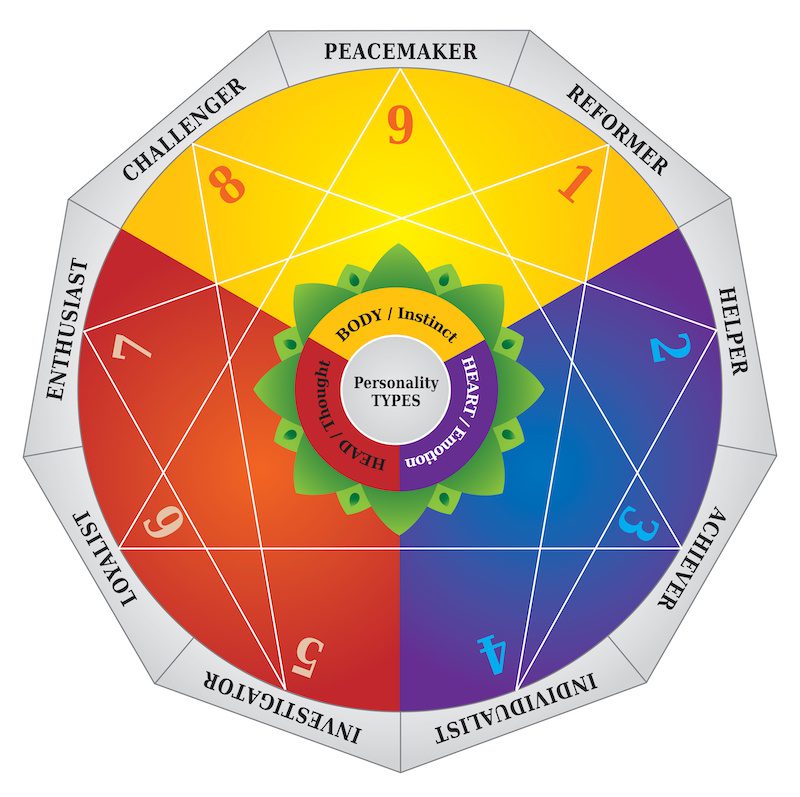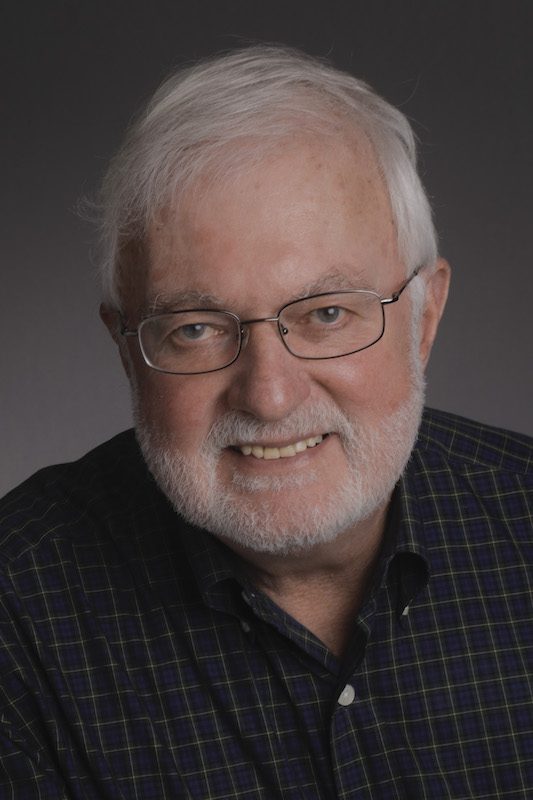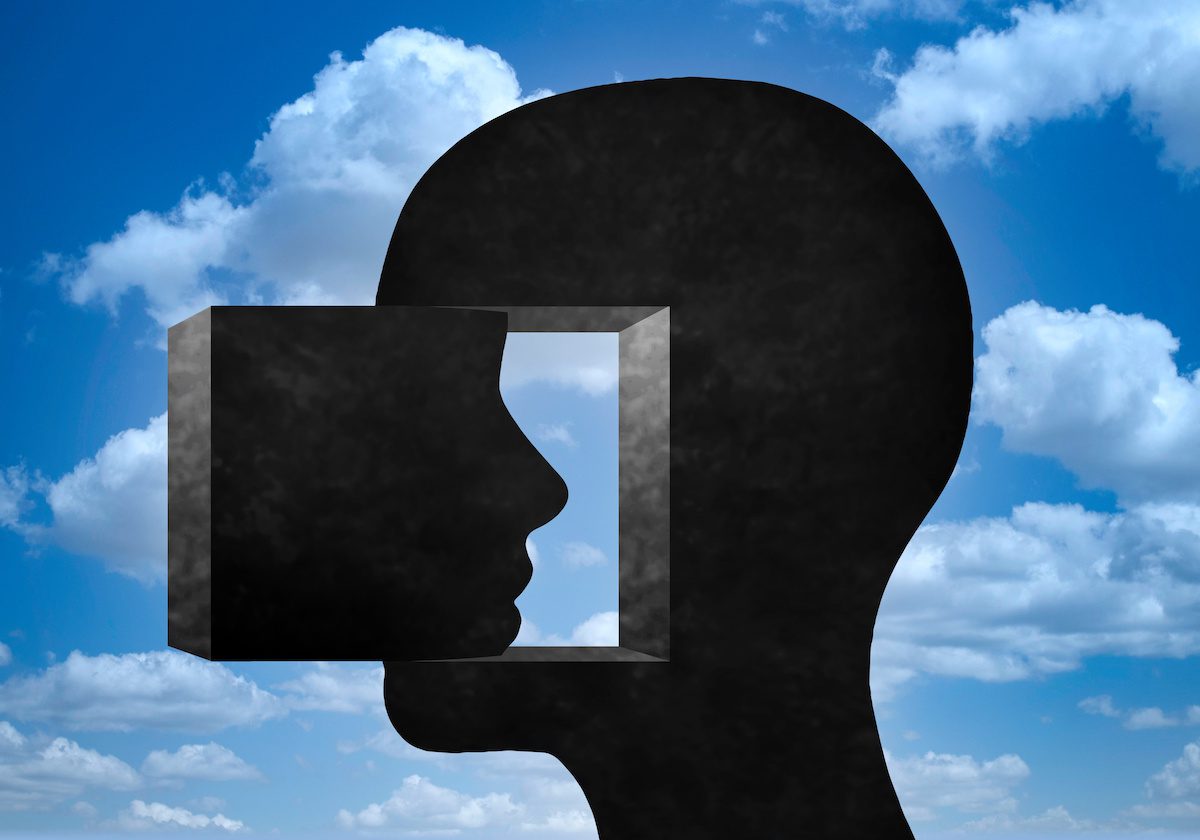This method of understanding yourself “truly, deeply and honestly” has profound implications not only for personal growth, but for success in the workplace. Here’s how it works.
From fleeting fads to age-old tools, it can be overwhelming to stay on top of the endless ways to assess and advance self-development. While some might embrace astrology, Myers-Briggs assessments, or any of the countless other personality tests, the Enneagram (pronounced ANY-uh-gram) is definitely having a moment, particularly among Millennials.
Some proponents trace the Enneagram’s roots back to a 4th century monk, while its modern iteration is attributed to a Bolivian philosopher and California-based psychiatrist who popularized it in the 1970s. Whatever its murky origins, its aims are clear: The primary purpose is to know yourself “truly, deeply and honestly,” says vice president of The Enneagram Institute, Brian L. Taylor.
“At its most basic, the Enneagram posits nine distinct and fundamental personality types — nine ways that human nature expresses itself, nine different perspectives on life, nine modes of being in the world — and their dynamic interrelationships,” says Taylor. “These basic types can be arranged on a circle that represents all human traits and behaviors. While each of us possesses each of these human traits and can manifest from time to time the traits of other types, one type and its behaviors and fixations will stand out as primary.”
The Enneagram Types:

- Type 1 is principled, purposeful, self-controlled and perfectionistic.
- Type 2 is generous, demonstrative, people-pleasing and possessive.
- Type 3 is adaptable, excelling, driven and image-conscious.
- Type 4 is expressive, dramatic, self-absorbed and temperamental.
- Type 5 is perceptive, innovative, secretive and isolated.
- Type 6 is engaging, responsible, anxious and suspicious.
- Type 7 is spontaneous, versatile, acquisitive and scattered.
- Type 8 is self-confident, decisive, willful and confrontational.
- Type 9 is receptive, reassuring, complacent and resigned.
These types, which Taylor emphasizes aren’t arbitrary, fall into three groups of three, each associated with a function of human intelligence — the Thinking Center, the Feeling Center, and the Instinctive Center:
- Types 2, 3 and 4 constitute the Feeling Triad, and are most concerned with finding a sense of value and identity, and expressing the authentic qualities of the heart.
- Types 5, 6 and 7 are associated with the Thinking Center, and are most concerned with the ability or inability to find a sense of inner guidance and support, making decisions and determining how to move into the future.
- Types 8, 9 and 1 represent the Instinctive Triad, and are concerned with relating in a more or less balanced manner with instinctual energy and maintaining imaginary boundaries to help define the self.
Taylor says the Enneagram primarily aims to help us observe ourselves, to aid in understanding our fears and desires, our strengths and weaknesses, our defenses and anxieties, and to see our reflexive reactions. On the most positive end, this allows us to see our truest capacities and strengths so we can build on them. The Enneagram can help us to understand others, too — fostering compassion and obtaining insight into how they may think. This ultimately allows us to appreciate perspectives different than our own.
On the down side, Taylor admits the Enneagram can be used on a superficial level to merely determine one’s type and then explore no further. “This is decidedly not the purpose of the Enneagram,” he says. “It is for greater self-awareness and personal growth, and is most effective when coupled with an ongoing spiritual practice. Knowing your type is not the end but only the beginning of the work with the Enneagram.”

Taylor believes this can be an especially powerful tool in all facets of life — including the workplace — since, once we know our type, we can begin to understand the structures of our personality and how unhelpful (even self-defeating and unnecessary) many of our reactions and behaviors can be.
“The Enneagram can help make us aware of how often we are drawn into fantasies, anxieties, fears and subjective memories that can narrow our point of view, bolster our prejudgments and … prevent us from being open to the moment and to the realities of others,” says Taylor.
It can also help us to see that others are similarly held back, and that we don’t all think and react the same way. “The Enneagram can open the door to compassion for ourselves and for others,” he says. “And if we can recognize what type others may be and what unnecessary boundaries may exist, we can more effectively bring compassion, openness and flexibility into the workplace, understand others’ underlying motivations, agendas and individual approaches, and then define and work together to reach appropriate common goals.”
If a manager works with the Enneagram to identify and encourage such individual awareness, the entire group can benefit.
However, within a team, one should proceed with sensitivity and care when attempting to type others. When a group knows and appreciates others’ correct Enneagram types, Taylor finds it easier and more efficient to assign or assume responsibilities. “For example,” he says, “some types excel at personal initiative, risk-taking and leadership, while others prosper on facts, expertise and innovation, while others succeed when they can work without undue micromanagement or interference. Conversely, it is easier to see when a task has simply been assigned to the wrong person.”

When taking the Institute’s assessment, the Riso-Hudson Enneagram Type Indicator (the RHETI), Taylor says there are no right or wrong responses. Also, it’s helpful to first have a certain amount of self-knowledge and honesty. He also points out the RHETI addresses the average range of human behavior, attitudes and feelings — and isn’t designed to indicate mental or emotional issues.
The RHETI will identify the taker’s most likely basic type, and since we have aspects of all nine types within us, the remaining eight types should also be considered as indications of the range of potentials we have and how they may shift over time. (It can be help to periodically retake the test to observe personal growth or deterioration among the qualities of other types. And if you experience a tie among your top types, perhaps review your choices with those who know you well.)
This practice has no doubt gained skepticism from certain audiences. When it comes to naysayers, Taylor makes a distinction between a skeptic who doubts the Enneagram (but hasn’t rejected it) — and a true denier who thinks the Enneagram has no effectiveness or accuracy.
“For the former, I suggest these individuals keep an open and receptive mind, as true skeptics would, and engage in discussions with those who use the Enneagram and learn more objectively about it,” he says. “As for deniers, many in my experience seem to dismiss the Enneagram stemming from a misunderstanding of its purpose or … from a fear of what we may find out about ourselves.”
Taylor has firsthand experience with the usefulness of this tool. Having worked as a lawyer at a large, Manhattan-based law firm, he found it beneficial when recognizing his own reactions in difficult negotiations — and learning to let them go without getting distracted by emotions. It also helped him in “recognizing my own limitations in certain situations and when to seek assistance from those with different skill sets from my own, in learning to recognize and acknowledge the talents and abilities of others, and even in interviewing nervous and anxious second- and third-year law students looking for employment.”
But, he says, taking this kind of exploration isn’t without its challenges: “It takes a great deal of faith to confront ourselves and our weaknesses without knowing what we may discover — to open our hearts and stop playing out the unconscious dictates of our personality, and to embark on an unending journey of personal and spiritual growth.”
Read more about the Enneagram and its personality assessment, the RHETI, at www.enneagraminstitute.com.




